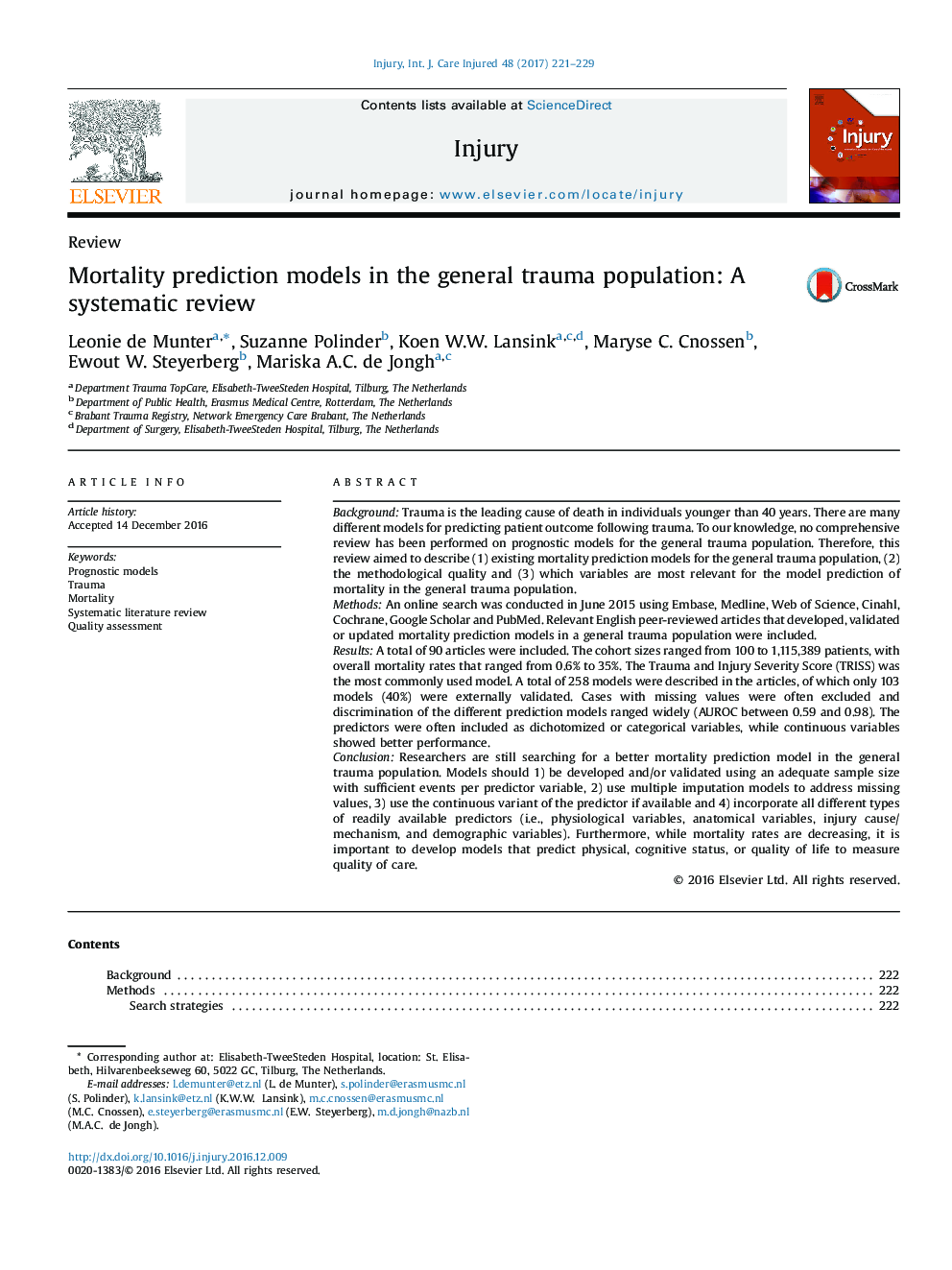| کد مقاله | کد نشریه | سال انتشار | مقاله انگلیسی | نسخه تمام متن |
|---|---|---|---|---|
| 5652787 | 1407227 | 2017 | 9 صفحه PDF | دانلود رایگان |
BackgroundTrauma is the leading cause of death in individuals younger than 40 years. There are many different models for predicting patient outcome following trauma. To our knowledge, no comprehensive review has been performed on prognostic models for the general trauma population. Therefore, this review aimed to describe (1) existing mortality prediction models for the general trauma population, (2) the methodological quality and (3) which variables are most relevant for the model prediction of mortality in the general trauma population.MethodsAn online search was conducted in June 2015 using Embase, Medline, Web of Science, Cinahl, Cochrane, Google Scholar and PubMed. Relevant English peer-reviewed articles that developed, validated or updated mortality prediction models in a general trauma population were included.ResultsA total of 90 articles were included. The cohort sizes ranged from 100 to 1,115,389 patients, with overall mortality rates that ranged from 0.6% to 35%. The Trauma and Injury Severity Score (TRISS) was the most commonly used model. A total of 258 models were described in the articles, of which only 103 models (40%) were externally validated. Cases with missing values were often excluded and discrimination of the different prediction models ranged widely (AUROC between 0.59 and 0.98). The predictors were often included as dichotomized or categorical variables, while continuous variables showed better performance.ConclusionResearchers are still searching for a better mortality prediction model in the general trauma population. Models should 1) be developed and/or validated using an adequate sample size with sufficient events per predictor variable, 2) use multiple imputation models to address missing values, 3) use the continuous variant of the predictor if available and 4) incorporate all different types of readily available predictors (i.e., physiological variables, anatomical variables, injury cause/mechanism, and demographic variables). Furthermore, while mortality rates are decreasing, it is important to develop models that predict physical, cognitive status, or quality of life to measure quality of care.
Journal: Injury - Volume 48, Issue 2, February 2017, Pages 221-229
